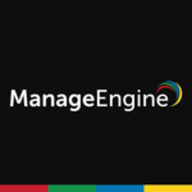

Splunk AppDynamics and ManageEngine IT360 are competing products in the IT management space. ManageEngine IT360 seems to have the upper hand due to its comprehensive feature set and overall IT management capabilities.
Features: Splunk AppDynamics provides application performance monitoring, end-to-end transaction tracking, and dynamic baselining. ManageEngine IT360 offers network monitoring, application management, and server monitoring for a consolidated IT management experience.
Room for Improvement: Splunk AppDynamics could enhance ease of deployment and reduce technical overhead. ManageEngine IT360 can improve its user interface, integration capabilities, and expand its analytics features.
Ease of Deployment and Customer Service: ManageEngine IT360 is known for its seamless deployment and excellent customer support, which users find reliable. Splunk AppDynamics requires more technical expertise and time for deployment, though it remains effective in its domain.
Pricing and ROI: Splunk AppDynamics offers a competitive pricing model with favorable long-term ROI due to powerful analytics tools. ManageEngine IT360 justifies its higher setup costs with extensive features and supportive customer service, providing significant value for organizations needing a broad IT management solution.
| Product | Market Share (%) |
|---|---|
| Splunk AppDynamics | 2.8% |
| ManageEngine IT360 | 0.2% |
| Other | 97.0% |

| Company Size | Count |
|---|---|
| Small Business | 55 |
| Midsize Enterprise | 36 |
| Large Enterprise | 188 |
With IT360 you will deliver services efficiently with maximum scalability. Service providers can now accurately manage the SLAs and release new services faster with features like Multi-tenancy, High Availability, Enterprise level systems and Datacenter monitoring, Remote site monitoring and Customer and site-specific dashboards.
Splunk AppDynamics enhances application performance monitoring with advanced diagnostics and real-time insights, offering seamless end-to-end transaction tracking and infrastructure visibility.
AppDynamics provides critical tools for businesses to analyze application behavior and performance. Through innovative features like transaction snapshot analysis and adaptable dashboards, users can quickly identify and address issues, ensuring high levels of system uptime and efficiency. It is designed to support complex environments including Kubernetes and AWS, enhancing user experience by detecting performance issues early. Despite needing improvements in network monitoring and integration, it remains a robust option for tracking application health.
What are the key features of AppDynamics?In industries like financial services and e-commerce, AppDynamics facilitates performance tracking across distributed systems, optimizing infrastructure to meet consumer demands. It excels in environments needing precise transaction monitoring and is pivotal in delivering high value and satisfaction.
We monitor all IT Infrastructure Monitoring reviews to prevent fraudulent reviews and keep review quality high. We do not post reviews by company employees or direct competitors. We validate each review for authenticity via cross-reference with LinkedIn, and personal follow-up with the reviewer when necessary.